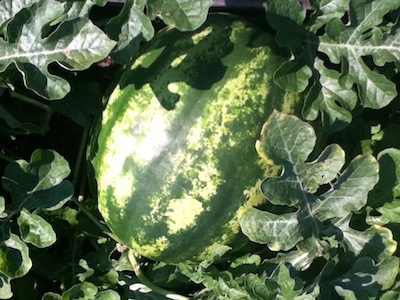Gardening Tip #5: Don't Spread Too Many Seeds!
There are many instances in gardening when too much of something ends up being a bad thing. Too much water is one example; too many seeds is another.
It can be very tempting when preparing a garden to overseed; after all, these seeds are so tiny, and the garden plot is so, so big. Obviously, you're going to need lots of seeds to fill all that space. Not so fast!
Spread the Right Amount
When it comes to seeds, the general rule is a little typically goes a long way. Nature is amazing, and nowhere is that more evident than in watching massive plants sprout from such tiny little seeds. It's important to keep this in mind when planting. Your bare garden will soon be a dense green oasis.
Overspreading seeds will create a dense, overgrown thicket of plants rather than neat, orderly rows of easily-accessible plants. This thick growth makes harvesting vegetables , weeding, pruning, and other garden activitiesd difficult if not impossible. Thick growth can also keep sunshine from the entire plant where it's needed for healthy growth. Too much shade can also encourage things like mold, insects, and other things detrimental to your garden's health.
As a general rule, once you're plotted out your garden and determined how many plants you want of each vegetable, plant twice that amount of seeds. This gives you some leeway in case some of the seeds don't sprout.
It's also important to space your seeds out properly. If a plant has a diameter of 10 inches, make sure to plant the seeds at least that same distance apart. Planting seeds too close together and you'll get overcrowding and all of the problems associated with it.
To determine how much to plant, first calculate the square footage of your garden, or of the space in your garden for each individual plant. Multiply the length and width of the space to determine square footage. The directions on commercial seed packages should also indicate proper planting specifications as well. A quick Google search for your particular plants will also give you lots of good planting information. If there's one thing about gardeners, they are always willing to share their good gardening advice !
| Planting Chart - Number of Plants Needed for Different Square Footage | ||||||||
| Area | 4" Plant | 6" Plant | 8" Plant | 10" Plant | 12" Plant | 15" Plant | 18" Plant | 24" Plant |
| 5 Sq. Feet | 45 | 20 | 12 | 8 | 5 | 4 | 3 | 1 - 2 |
| 10 Sq. Feet | 90 | 40 | 24 | 16 | 10 | 8 | 6 | 2 - 3 |
| 15 Sq. Feet | 135 | 60 | 48 | 24 | 15 | 12 | 9 | 4 |
| 20 Sq. Feet | 180 | 80 | 60 | 30 | 20 | 16 | 12 | 5 |
| 25 Sq. Feet | 225 | 100 | 57 | 36 | 25 | 16 | 11 | 6 |
| 50 Sq. Feet | 450 | 200 | 114 | 72 | 50 | 32 | 22 | 13 |
Be Extra Careful with Vine Plants
Plants that grow on vines, such as watermelons, pumpkins, and squashes need extra care when being seeded. These vines will quickly grow to amazingly large sizes and overtake an entire garden if overseeded. We learned this first-hand one year when we attempted to grow watermelons. The melon plants exploded , overtaking the carrots and lettuce, then burst over the wall of the raised garden bed, ultimately growing approximately 15 feet past the bed!
comments powered by Disqus





































































